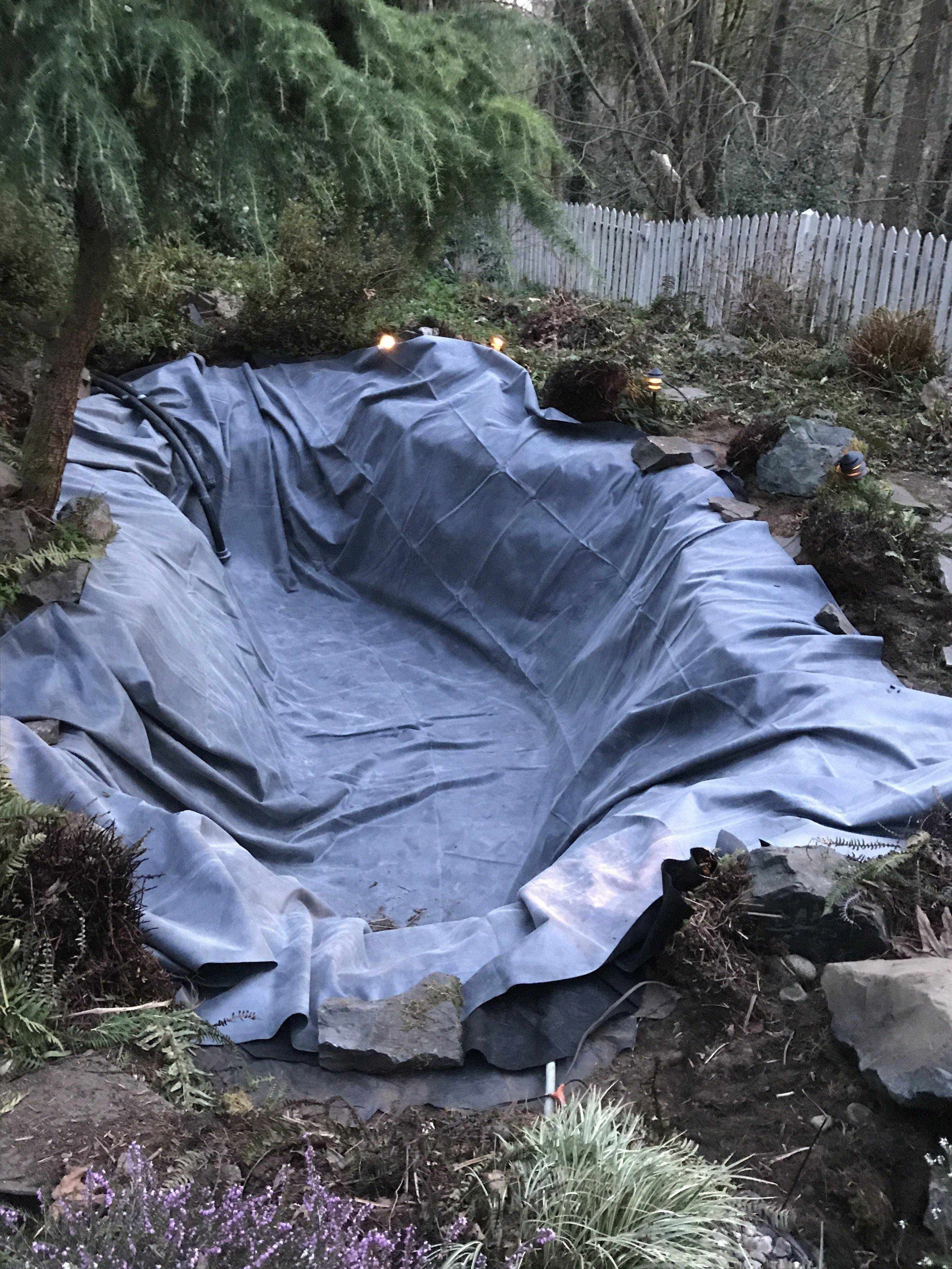With the planning complete, whether a stream, a pondless waterfall, a shallow marsh, fountain, pond or some combination of any of these, it’s time for actual construction. This will generally be labor intensive! Before beginning, ensure you have gather permits or other code requirements of your municipality as well.
Excavating: Mark the ground where the hose lies with spray paint. Since water features can be any size, the tools required will also vary. Hand trowels, shovels, or even earthmoving machines may be appropriate. Before digging, always ensure that there are no underground utilities that are going to be in the way. Many cities and counties have numbers you can call and they will identify such obstacles for free. Various regions have to contend with large amounts of rocks or roots in the soil needing additional tools. Levels, lasers and measuring devices may also prove useful. Refer to your sketch often. However, when you see the hole in three dimensions, you may decide that the pond is too large or small or you want a different shape. This is why you should NOT buy other components until you establish the main pool, streambed or waterfall. If you make large changes, update your gallon estimate and your sketch. Lastly, you want to remove all protruding rocks, roots and such from the walls and floor of the excavation. I created a 2’ x 1’ dirt sifter and stapled 1/4" steel mesh onto 1 by 2 frame for removing rocks and debris from the spoil as needed. NOTE: If digging steep or straight sides, always add temporary safety supports with banks over 3’ deep.
Liner: Having dug your hole, take a tape measure at the widest part of the pond beginning a foot from the edge of the excavation and drape it across the hole following the bank down, across the bottom and up the other side and a foot beyond the hole edge (record the width). Do the same on the longest axis of the pond (again with a least a foot of on each bank). Record the length. This will give you the needed size of your pond liner. Do the same for waterfalls and streambeds – ensure to have about a foot beyond the banks. There are a few different materials out there: PVC, LDPE and EDPM. I inherited a PVC liner. When new, it is pliable, but over time it hardens due to the sun’s UV baking out the plasticizers. The liner then becomes brittle and will leak. This can happen in a short time depending on the amount of sunlight exposure. LDPE is the same material as some tarps which tend to crease, not as pliable but cheaper for large scale. EDPM is a synthetic rubber that is thick and long-lasting. It can be purchased in many sizes and has “give” making it harder to puncture. It is also relatively easy to patch or seam on pieces. Underlayment should also be purchased. This is a tough, woven material which should be placed in the hole before laying a liner in to ensure nothing will stab the liner. A seaming kit may also be needed.
Liner Penetrations: Another thing to consider is liner penetrations. For instance, you may desire a bottom drain. This assembly will need to have a trench in the bottom of the pond and installed through the liner. Or, the pump intake line or winter bypass discharge line you may wish to go through the liner at the bottom of the pond. In other places is where a waterfall begins at the weir or a stream ends (or pond skims). For piping through the liner, you can purchase what is known as a bulkhead fitting which sandwiches the liner between two pieces of the fitting and has a gasket. The weir or skimmer box usually has a frame that sandwiches the liner around the opening. In my pond, I was covering an old liner with a new one. The existing plumbing had not penetrated the existing liner, so my plumbing is inside the liner of the pool.
Securing the Liner: Once the liner is laid in over the underlayment, all penetrations made watertight, and all the wrinkles minimized with neat folds, secure the perimeter with flagstones or similar material to hold the liner in place. Use pond foam to secure the stones. Leave spaces for main components.
Previous Article: 05: Pond Planning – Secondary Components
Next Article: 07: Pond Planning – Component Placement

